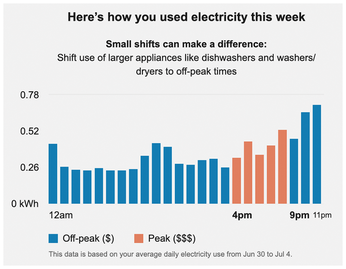Monitor your energy consumption with Go
Programming Snapshot – Go Energy Monitor

© Lead Image © Lightwise, 123RF.com
Before adding a new gadget to the household, Mike Schilli always monitors its power consumption with a Go program and creates intuitive graphs to decide whether it can stay.
Electricity is expensive. Where I live, in California, a kilowatt hour costs around 40 cents. If a new gadget consumes 20W in continuous operation, that adds up to 14kWh per month or almost $6. In addition, the price of electricity from my utility, Pacific Gas & Electric, is based on the time of day (Figure 1). A time-based power consumption breakdown for selected devices could offer ideas for potential savings.

An energy monitor such as the TP-Link Tapo P110M (Figure 2) keeps you up to date with the amount of power you are currently using; it has an API to make the measurement results available to inquiring WiFi clients. Upon request, the small device reports the power currently being drawn in milliwatts by all consumers plugged into it. On top of that, it also features two persistent counters that measure cumulated watt hours, one for the current day and one for the month.
[...]
Buy this article as PDF
(incl. VAT)
Buy Linux Magazine
Subscribe to our Linux Newsletters
Find Linux and Open Source Jobs
Subscribe to our ADMIN Newsletters
Support Our Work
Linux Magazine content is made possible with support from readers like you. Please consider contributing when you’ve found an article to be beneficial.

News
-
Two New Distros Adopt Enlightenment
MX Moksha and AV Linux 25 join ranks with Bodhi Linux and embrace the Enlightenment desktop.
-
Solus Linux 4.8 Removes Python 2
Solus Linux 4.8 has been released with the latest Linux kernel, updated desktops, and a key removal.
-
Zorin OS 18 Hits over a Million Downloads
If you doubt Linux isn't gaining popularity, you only have to look at Zorin OS's download numbers.
-
TUXEDO Computers Scraps Snapdragon X1E-Based Laptop
Due to issues with a Snapdragon CPU, TUXEDO Computers has cancelled its plans to release a laptop based on this elite hardware.
-
Debian Unleashes Debian Libre Live
Debian Libre Live keeps your machine free of proprietary software.
-
Valve Announces Pending Release of Steam Machine
Shout it to the heavens: Steam Machine, powered by Linux, is set to arrive in 2026.
-
Happy Birthday, ADMIN Magazine!
ADMIN is celebrating its 15th anniversary with issue #90.
-
Another Linux Malware Discovered
Russian hackers use Hyper-V to hide malware within Linux virtual machines.
-
TUXEDO Computers Announces a New InfinityBook
TUXEDO Computers is at it again with a new InfinityBook that will meet your professional and gaming needs.
-
SUSE Dives into the Agentic AI Pool
SUSE becomes the first open source company to adopt agentic AI with SUSE Enterprise Linux 16.

